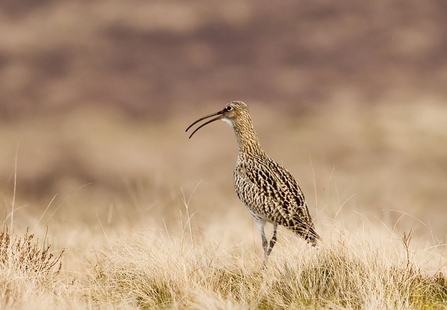By James Pearce-Higgins; Director of Science, British Trust for Ornithology
In early November, the British Trust for Ornithology (BTO) launched a new report on the impacts of climate change on UK birds, timed to coincide with the Glasgow Climate Change CoP. This aimed to do three things: 1) to summarise the evidence of impacts of climate change on the UK avifauna so far; 2) to collate the results of different species’ vulnerability assessments for UK birds in a single place; and 3) to flag that how we respond to climate change may also have significant impacts on our birdlife (which could be positive or negative). A key thread running through the report was the importance of long-term monitoring and data to track the impacts of climate change, and of that data and evidence to inform societal responses. Much of those data originate from citizen-science monitoring schemes such as the BTO/JNCC/RSPB Breeding Bird Survey or BTO Atlas projects.
The report paints a mixed picture for UK birds. Whilst many of the effects of climate change that we have seen in the UK have so far been positive, particularly for common and widespread resident birds that now have a reduced risk of cold weather mortality in winter, two groups stand out as major climate change losers; our internationally important breeding seabird populations, and our unique assemblage of upland bird species, which include those associated with peatlands. Overall, the species which show negative responses to temperature have tended to decline, whilst those which show mixed or positive responses to temperature have tended to have stable or increasing temperatures, providing good evidence that climate change is having a widespread impact on the long-term trajectories of our bird populations.
Thirteen of the upland bird species assessed are declining, compared to only two with increasing populations. Six show evidence for negative responses to temperature, compared to only one with a positive response. And in terms of future vulnerability, 19 are regarded as at high or medium risk of negative climate change impacts compared to no species thought likely to benefit. This includes a number of peatland specialists such as golden plover and dunlin, for whom there is good evidence that hot dry summers reduce the abundance of key invertebrate prey such as tipulids, impacting breeding success and population trajectories of these species(1,2). It is studies such as these which combine long-term monitoring data and an ecological understanding of the impacts of climate change, that provide Important evidence to support this assessment.
The Glasgow CoP was focussed on the need for urgent climate change mitigation towards the 1.5°C target, and also how we adapt to the climate change that we are already committed to. Potential large-scale transformation of our lands and seas for energy production could also have a significant impact on our bird populations, which the report highlights. In relation to our peatlands, this could be positive; peatland restoration, particularly raising water levels by blocking drainage ditches, can help increase resilience to warming (3,4). However, there is a danger that large-scale tree planting for climate change mitigation can be damaging to peatland birds. For many of our breeding waders like curlew, golden plover and dunlin which avoid trees, the negative effects of tree planting can extend to 1km or more beyond the woodland edge. BTO is actively working with others to develop a sensitivity map for the UK, which will identify the areas where this could cause serious negative impacts for waders. This combination of citizen science and professional research is a highly effective way of generating evidence that can be used by society to minimise conflicts between nature conservation and climate change mitigation, and to maximise the opportunities for win:win solutions for both climate and biodiversity.

